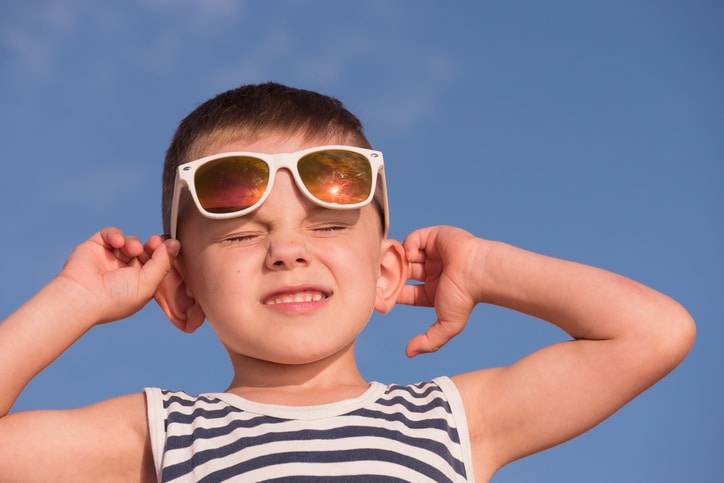BOOK ONLINE NOW
Photophobia is an uncomfortable sensation or pain in the eye from exposure to bright light – the light can be natural like sunlight, or artificial such as a fluorescent bulb.
The pain that occurs is related to the connection between photoreceptors in the eyes and the optic nerve in the brain.
Photophobia is particularly common in children, and is one of the visual conditions often seen in youngsters with autism (1,2).
It may also be a symptom of an underlying issue such as:
Glare comes from bright or reflected light and can affect the child’s ability to see. There are two types: Discomfort Glare and Disability Glare.
Discomfort Glare
This results from light being too bright. The child will close their eyes, screw them up or shade them, but their vision is not affected.
Disability Glare
This type of glare is caused by eye conditions and reduces how well the child can see. It reduces contrast, making it difficult for them to distinguish objects.

Burning, redness or grittiness in the eye are symptoms of dry eye syndrome, which may be linked to light sensitivity.
Inflammation and infection may cause corneal irregularities that scatter the light entering the eye, causing photophobia to develop.
Photophobia is linked to an increase in blinking, triggered by light stimuli. However, it is a bit of chicken and egg situation, since it can be difficult to identify whether photophobia leads to blinking, or if blinking leads to photophobia.
An optometrist can perform tests to assess the performance of your child’s eyes in terms of distinguishing shapes and details of objects at a given distance.
If there is a problem, a personalised treatment program may be recommended.
The therapeutic program may involve the use of specialised lenses and prisms – photophobia glasses – together with visual exercises to strengthen neural connections and address the underlying issue.
Specially tinted photophobia glasses are used to block the wavelengths of light that are most likely to trigger symptoms, and to alleviate the discomfort caused by light sensitivity.
If you suspect your child is suffering from light sensitivity, please make an appointment by calling 3824 1878 or booking online. The behavioural optometrists here at Aphrodite Livanes Eyecare Plus have a special interest in vision therapy and working with children – and we also have a massive range of spectacle frames for children so if they do need treatment, at least they will love wearing their photophobia glasses!
© 2025 Aphrodite Livanes Optometrist Brisbane: Eye Care Plus. All rights reserved.